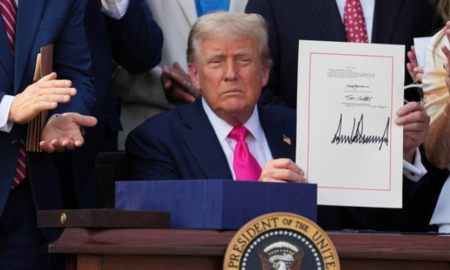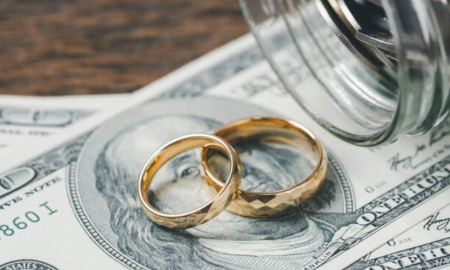
Gender Finance Gap: Addressing the Elephant in the Room

The gender finance gap is a global issue that has been present for centuries, and sadly, still remains today. The financial opportunities offered to men are often much greater than those available to women due to long-held gender stereotypes and discrimination in the workplace.
In this article, we will discuss the issue of the gender finance gap and explore its causes and effects. We will also offer potential solutions for tackling it.

Anastasia / Pexels | Women struggle with burnout and low payments because of gender finance gaps.
The Gender Finance Gap
The gender finance gap means the disparities in financial opportunities between men and women. This can manifest itself in different forms, such as unequal pay for equal work or a greater likelihood of being denied access to credit. It is estimated that worldwide, women are paid up to 50% less than their male counterparts for doing the same job and hold only 28% of managerial positions globally.
This lack of financial equality means that many women miss out on crucial economic resources needed to invest in their own futures and those of their families. It also has wider implications, such as increased poverty levels among female-headed households due to lower income.
What Causes Gender Finance Gap?
The gender finance gap is caused by a variety of factors, from systemic sexism to unequal access to resources. It is rooted in long-held societal biases and stereotypes that deem women less capable or “worthy” than men when it comes to financial matters.
There are also institutional obstacles to overcome. For instance, women often do not have the same access to credit and loans that men do. Why is this so, you ask? This is due to gender bias in decision-making at banks and other financial institutions.

Top / Pexels | In simple words, Gender Finance Gap refers to the “disparities” between men and women.
What are the Effects of the Gender Finance Gap?
The effects of the gender finance gap can be far-reaching and deeply damaging. Women tend to bear the brunt of poverty more heavily due to lower wages, lack of job security, and limited access to resources. This leads to an increased risk of exploitation, domestic violence, and other forms of gender-based discrimination.
Financial inequality also affects children’s education. Many families struggle to afford basic necessities. Or, pay school fees if the mother is not able to bring in enough income.
Addressing the Gender Finance Gap
There are several steps that can be taken by governments, businesses, and individuals to ensure fairness in financial opportunities for women. These include:
- Governments should implement laws that guarantee equal pay for equal work between men and women.
- Companies should ensure they have a diverse workforce and create policies that foster female leadership in management roles.
- Individuals should support women-owned businesses and challenge gender stereotypes in the workplace.

Chev / Pexels | Because of Gneder Finance Gaps, women are exposed to burnout and struggle with the brunt of poverty.
The Final Word
The issue of the gender finance gap is one that needs to be tackled if we are to achieve true financial equality between men and women. It is essential to create an environment where every individual has an equal chance at achieving economic success, regardless of their gender.
We need to work together to break down long-held biases and create policies that foster fairness and opportunity for everyone. Only then can we move forward toward a fair world with equal opportunities for all.
More in Business
-
`
Cowboy Superstitions and Traditions That Might Surprise You
Picture this: the chute clangs open, dust plumes, and all eyes track a cowboy mid-stride. But what the crowd doesn’t see...
July 22, 2025 -
`
What’s Changing for Student Loans After Trump’s New Spending Bill?
The passing of President Donald Trump’s latest spending bill is shaking up more than just tax brackets and business deductions—it’s poised...
July 16, 2025 -
`
Why Big Tech Is Divided on the Future of Artificial General Intelligence
Fifteen years ago, the founders of DeepMind—Sir Demis Hassabis, Mustafa Suleyman, and Shane Legg—set a bold goal: “Build the world’s first...
July 1, 2025 -
`
Planning a Wedding? These Money-Saving Tips Actually Work
Weddings are meant to be memorable, not financially draining. But for many couples, the cost of tying the knot often brings...
June 24, 2025 -
`
Did MrBeast Really Borrow Money From His Mother for His Wedding?
YouTube star Jimmy Donaldson, widely known as MrBeast, sparked surprise when he shared a personal update on X. Despite leading the...
June 17, 2025 -
`
How Smart Technology Is Changing the Way We Travel
Technology has reshaped nearly every part of modern life, and travel is no exception. From how we plan trips to how...
June 12, 2025 -
`
Why Some Tech CEOs Are Replacing Themselves With AI Avatars
In a move that signals a shift in how corporate communication is handled, major tech CEOs are beginning to hand the...
June 3, 2025 -
`
Is Innovation Dead in American Pop Culture?
Has something changed in the way we engage with American pop culture? Scroll through your favorite streaming service, tune into the...
May 27, 2025 -
`
7 Key Steps to Start a Profitable Digital Products Business
Starting a digital products business offers an exciting opportunity to turn your skills and knowledge into a revenue-generating venture. Whether you’re...
May 20, 2025














You must be logged in to post a comment Login